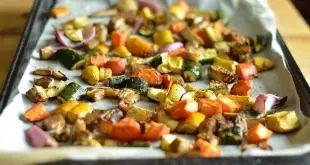Most foods sold in the United States, with a very few exceptions, MUST have a nutrition facts label on them. It looks something like this:
It’s a lot of information, isn’t it? And, to add insult to injury for us, at the bottom it says it’s based on a 2,000 calorie a day diet. Yeah, that’s not us. Well….it’s not a good portion of us.
So how do we get what WE need from a nutrition label? And just what the heck do all those numbers mean anyway?
Let’s begin at the beginning.
Serving Size/Servings Per Container
This piece of information has some usefulness, but it can also be very deceptive. First off, the serving size is a suggestion by the food company of how much of their product you should eat at a time. Problem is, they get to suggest any quantity they want and they don’t always make those decisions in our best interests.
Food companies know we want things that are low calorie, low-carb, low-fat, so they have the ability to adjust portion sizes until they get to a number that they think will make you more likely to buy their products. This does not work in our favor. Even though most portion sizes are too big for us, at least in the beginning, serving sizes can still be bothersome.
Still, they give you a “jumping off point” so to speak, and that can be helpful.
The Skinny
My advice for the WLS patient for the serving size is this:
- Base your decisions about a food’s nutrition on how much of it you can eat. So if the serving size says ½ cup and you can only eat ¼ cup, divide the nutrients in half and make your food decisions based on THAT number.
- Take into account what kind of food you are judging. A serving size of mayo isn’t going to be the same, proportionally, as a serving size of cereal. This is especially important when judging whether something is very caloric or not. A serving size of cereal that is 100 calories for 1/4 cup is not necessarily a good number. A tablespoon of fully loaded mayo is about the same amount of calories but all in one tablespoon. So lastly…
- Know your conversions. I have a handy list that I used in the beginning. Now I know them by heart. Conversions work well especially as you are being directed to eat portions of a cup when in reality you are eating just tablespoons worth of food. It helps to know how to break it down. Also, knowing how to scale up (and quickly do the math for a whole recipe instead of just one portion) is helpful, especially in the example of the mayo.
Tomorrow, we’ll move on to the calories section and learn what one piece of information can un-mask an unhealthy food in an instant!
 Bariatric Foodie Play with your food
Bariatric Foodie Play with your food



